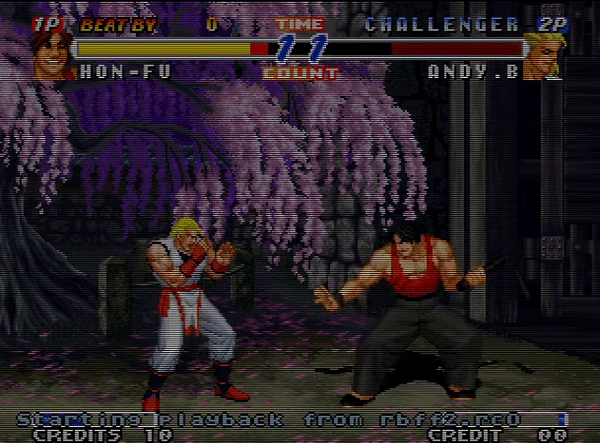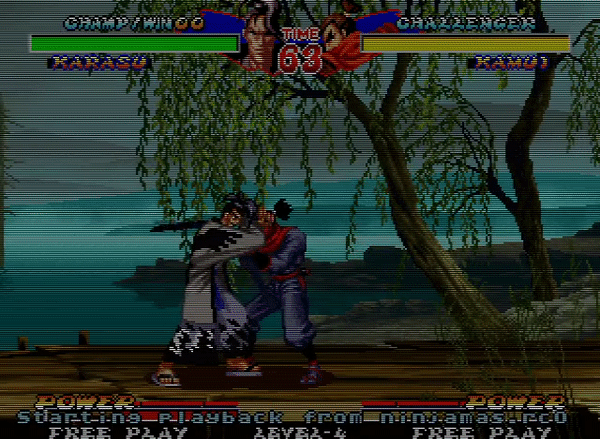 Posted by Bannana
in (Extra Bout) Fatal Fury (Started by Bannana April 30, 2021, 01:36:50 am
Posted by Bannana
in (Extra Bout) Fatal Fury (Started by Bannana April 30, 2021, 01:36:50 amBoard: Projects
https://streamable.com/bp00h0

 Posted by Bannana
in (Extra Bout) Fatal Fury (Started by Bannana April 30, 2021, 01:36:50 am
Posted by Bannana
in (Extra Bout) Fatal Fury (Started by Bannana April 30, 2021, 01:36:50 am Posted by Bannana
in (Extra Bout) Fatal Fury (Started by Bannana April 30, 2021, 01:36:50 am
Posted by Bannana
in (Extra Bout) Fatal Fury (Started by Bannana April 30, 2021, 01:36:50 am Posted by Bannana
in (Extra Bout) Fatal Fury (Started by Bannana April 30, 2021, 01:36:50 am
Posted by Bannana
in (Extra Bout) Fatal Fury (Started by Bannana April 30, 2021, 01:36:50 am
 Posted by Bannana
in Random Topic V10 (Started by Orochi Gill July 09, 2016, 05:00:44 am
Posted by Bannana
in Random Topic V10 (Started by Orochi Gill July 09, 2016, 05:00:44 am Posted by Bannana
in Random Topic V10 (Started by Orochi Gill July 09, 2016, 05:00:44 am
Posted by Bannana
in Random Topic V10 (Started by Orochi Gill July 09, 2016, 05:00:44 am Posted by Bannana
in The Final Frontier: Bayonetta. (Started by Ogre. April 17, 2021, 10:23:31 pm
Posted by Bannana
in The Final Frontier: Bayonetta. (Started by Ogre. April 17, 2021, 10:23:31 pm Posted by Bannana
in SFIV_Historic Distillery 1.0/1.1 (Started by Kamui_De_Los_Vientos March 30, 2021, 07:55:39 pm
Posted by Bannana
in SFIV_Historic Distillery 1.0/1.1 (Started by Kamui_De_Los_Vientos March 30, 2021, 07:55:39 pm Posted by Bannana
in A couple questions (Started by SPzero65 March 22, 2021, 10:08:08 pm
Posted by Bannana
in A couple questions (Started by SPzero65 March 22, 2021, 10:08:08 pm Posted by Bannana
in Gato+ (Garou JET) 100% (Started by Bannana January 06, 2021, 01:14:27 am
Posted by Bannana
in Gato+ (Garou JET) 100% (Started by Bannana January 06, 2021, 01:14:27 am Posted by Bannana
in Amnaelio released Chae-Lim (Started by Yagoshi300 March 05, 2021, 12:25:03 am
Posted by Bannana
in Amnaelio released Chae-Lim (Started by Yagoshi300 March 05, 2021, 12:25:03 am Posted by Bannana
in Garou: Mark of the Wolves AutoHitdef (Started by Bannana March 08, 2021, 02:17:25 am
Posted by Bannana
in Garou: Mark of the Wolves AutoHitdef (Started by Bannana March 08, 2021, 02:17:25 am[State HitDef]
type = HitDef
trigger1 = animelemtime(helper(222222),var(0))>=0
attr = S,NA ;SCA,NA,SA,HA,NP,SP,HP,NT,ST,HT
hitflag = MAF ;HLAFD+-
guardflag = M ;HLA
animtype = hard ;Light, Medium, Hard, Back, Up, DiagUp
priority = 4, Hit
damage = floor((helper(222222),var(1))*fvar(30)),floor((helper(222222),var(7))*fvar(30))
pausetime = (helper(222222),var(2)),(helper(222222),var(3))
sparkno = -1
guard.sparkno = -1
hitsound = S0, (helper(222222),var(15))+random%2
guardsound = S1, 1
ground.type = low ;Low, Trip, None
ground.slidetime = (helper(222222),var(4))
guard.slidetime = (helper(222222),var(4))
ground.hittime = (helper(222222),var(5))
guard.hittime = (helper(222222),var(5))
guard.ctrltime = (helper(222222),var(5))
air.hittime = (helper(222222),var(5))
ground.velocity = cond(animelemtime(helper(222222),var(0))=0,(-.5),(-2.29473946*fvar(9)-fvar(11))),0
air.velocity = -2.204769373,-6.6174449*fvar(10)
airguard.velocity = -2.204769373*fvar(9),-6.6174449*fvar(10)
getpower = floor((helper(222222),fvar(1))),floor((helper(222222),fvar(1))-(helper(222222),fvar(3)))
givepower = floor((helper(222222),fvar(1))),floor((helper(222222),fvar(1))-(helper(222222),fvar(3)))
[State HitDef]
type = HitDef
trigger1 = animelemtime(helper(222222),var(50))>=0
attr = S,NA ;SCA,NA,SA,HA,NP,SP,HP,NT,ST,HT
hitflag = MAF ;HLAFD+-
guardflag = M ;HLA
animtype = hard ;Light, Medium, Hard, Back, Up, DiagUp
priority = 4, Hit
damage = floor((helper(222222),var(1))*fvar(30)),floor((helper(222222),var(7))*fvar(30))
pausetime = (helper(222222),var(2)),(helper(222222),var(3))
sparkno = -1
guard.sparkno = -1
hitsound = S0, (helper(222222),var(15))+random%2
guardsound = S1, 1
ground.type = high ;Low, Trip, None
ground.slidetime = (helper(222222),var(4))
guard.slidetime = (helper(222222),var(4))
ground.hittime = (helper(222222),var(5))
guard.hittime = (helper(222222),var(5))
guard.ctrltime = (helper(222222),var(5))
air.hittime = (helper(222222),var(5))
ground.velocity = cond(animelemtime(helper(222222),var(0))=0,(-.5),(-2.29473946*fvar(9)-fvar(11))),0
air.velocity = -2.204769373,-6.6174449*fvar(10)
airguard.velocity = -2.204769373*fvar(9),-6.6174449*fvar(10)
getpower = floor((helper(222222),fvar(1))),floor((helper(222222),fvar(1))-(helper(222222),fvar(3)))
givepower = floor((helper(222222),fvar(1))),floor((helper(222222),fvar(1))-(helper(222222),fvar(3)))
 Posted by Bannana
in Garou: Mark of the Wolves AutoHitdef (Started by Bannana March 08, 2021, 02:17:25 am
Posted by Bannana
in Garou: Mark of the Wolves AutoHitdef (Started by Bannana March 08, 2021, 02:17:25 amtrigger1 = root,stateno = 200 && root,animelemtime(1)=0
trigger1 = var(0):=4 && var(1):=4 && var(7):=0 && var(2):=8 && fvar(2):=1 && fvar(4):=1 && var(10):=46 && var(11):=-69 && var(15)=0
trigger1 = root,stateno = 215 && root,animelemtime(5)=0 ; *2-pt
trigger1 = var(50):=6 && var(1):=6 && var(7):=0 && var(2):=8 && fvar(2):=1 && fvar(4):=1 && var(10):=40 && var(11):=-86 && var(15)=0
trigger1 = root,stateno = 1000 && root,animelemtime(1)=0
trigger1 = var(0):=8 && var(1):=10 && var(7):=2 && var(2):=12 && var(10):=60 && var(11):=-63 && var(15)=12
; These cover specials that lie outside of standard hitdef qualities
[State severity determination]
type = Null
trigger1 = root,movetype != A
trigger1 = fvar(2):=0
; throw
trigger2 = (root,stateno = 800)
trigger2 = fvar(2):=3
; light specials whiff
trigger3 = root,time<=4
trigger3 = (root,stateno = 1000) || (root,stateno = 1100) || (root,stateno = 1200)
trigger3 = fvar(2):=6
; light specials hit
trigger4 = root,time>4
trigger4 = (root,stateno = 1000) || (root,stateno = 1100) || (root,stateno = 1200)
trigger4 = fvar(2):=2
; heavy specials whiff
trigger5 = root,time<=4
trigger5 = (root,stateno = 1050) || (root,stateno = 1100) || (root,stateno = 1250)
trigger5 = fvar(2):=7
; heavy specials hit
trigger6 = root,time>4
trigger6 = (root,stateno = 1050) || (root,stateno = 1100) || (root,stateno = 1250)
trigger6 = fvar(2):=3
; Guard constant
[State guard determination]
type = Null
trigger1 = root,movetype != A
trigger1 = fvar(4):=0
; light specials
trigger2 = (root,stateno = 1000) || (root,stateno = 1100) || (root,stateno = 1200)
trigger2 = fvar(4):=1
; heavy specials
trigger3 = (root,stateno = 1050) || (root,stateno = 1100) || (root,stateno = 1250)
trigger3 = fvar(4):=2
 Posted by Bannana
in Garou: Mark of the Wolves AutoHitdef (Started by Bannana March 08, 2021, 02:17:25 am
Posted by Bannana
in Garou: Mark of the Wolves AutoHitdef (Started by Bannana March 08, 2021, 02:17:25 am; Idle is ALWAYS set two frames after an activeThis sort of backend caluclation makes hittime in Garou easy to work with because all hittimes in Garou are based upon the root p1 pausetime
[State idle set]
type = VarSet
trigger1 = var(0)
v = 6 ;fv = 10
value = var(0)+2
persistent=1
ignorehitpause=1
; pause/hit/slide time notesThus, a light punch pausetime of 8 will return p2 pausetime of 7, slidetime of 12, and hittime of 14, all of which are accurate to source.
; THESE TIMES ARE ABSOLUTELY UNIVERSAL, NOTHING HAS TO BE CHANGED ASIDE FROM SPECIALS
[State p2 pause]
type = VarSet
trigger1 = var(2)
v = 3 ;fv = 10
value = var(2)-1
persistent=1
ignorehitpause=1
[State slide time]
type = VarSet
trigger1 = var(2)
v = 4 ;fv = 10
value = var(2)+(var(2)/2)
persistent=1
ignorehitpause=1
[State hittime time]
type = VarSet
trigger1 = var(4)
v = 5 ;fv = 10
value = var(4)+2
persistent=1
ignorehitpause=1
; Calculation of raw power value
[State raw calculation]
type = VarSet
trigger1 = 1
fv = 1 ;fv = 10
value = floor(((fvar(0) - 1)/4194.305)*fvar(2))
ignorehitpause=1
persistent=1
; Calculation of guard power value
[State guard calculation]
type = VarSet
trigger1 = 1
fv = 3 ;fv = 10
value = floor(((fvar(0) - 1)/4194.305)*fvar(4))
ignorehitpause=1
persistent=1
 Posted by Bannana
in Gato+ (Garou JET) 100% (Started by Bannana January 06, 2021, 01:14:27 am
Posted by Bannana
in Gato+ (Garou JET) 100% (Started by Bannana January 06, 2021, 01:14:27 am Posted by Bannana
in Tiny Chaining for Tiny Buffering (Started by Bannana March 03, 2021, 12:18:07 pm
Posted by Bannana
in Tiny Chaining for Tiny Buffering (Started by Bannana March 03, 2021, 12:18:07 pm



[State 200, VarSet]
type = VarSet
trigger1 = Time = 1
var(6) = 0
[State -3, VarSet]
type = VarSet
trigger1 = HitPauseTime
trigger1 = !(var(6) & 112)
var(6) = (command = "holdfwd") | (command = "holdback") * 2 | (command = "holddown") * 4 | (command = "holdup") * 8
ignorehitpause = 1
[State -3, VarSet]
type = VarSet
trigger1 = HitPauseTime
trigger1 = !(var(6) & 112)
var(6) = var(6) | (command = "a") * 16 | (command = "b") * 32 | (command = "c") * 64
ignorehitpause = 1
[State -1]
type = ChangeState
value = 320
triggerall = roundstate = 2
triggerall = (command = "b" && command != "holddown") || ((var(6) & 32) && !(var(6) & 4))
trigger1 = stateno = 200 && AnimElem = 4,> 0 && AnimElem = 7,< 0
trigger2 = stateno = 205 && AnimElem = 3,> 0 && AnimElem = 6,< 0
trigger3 = stateno = 210 && AnimElem = 4,> 0 && AnimElem = 6,< 0
trigger4 = stateno = 215 && AnimElem = 2,> 0 && AnimElem = 4,< 0
;------------------- CHAINING ---------------------------------------------------;
; BY BANNANA --- ye, i'm no longer a code borrower, but code lender! :^)
;var(0) is set to x, subtracts over time
;if var(1) is set *while* var(0) > 0, var(50) is set to x
;my rule of thumb - light attack = 10, heavy attack = 20
;if !var(50) during a state, then pressing button sets (50) to 3, because the hitpause puses the count and doesn't require a larger active number.
;thus, assuming A=x and B=y
[State 10371, B chain Dec]
type = VarAdd
triggerall = root, HitPauseTime = 0
trigger1 = var(50)
var(50) = -1
[State 10371, B chain Init]
type = VarSet
trigger1 = command = "y"
var(50) = cond(var(0),10,3)
trigger1 = (helper(10371), var(50) && (helper(10371),command != "holddown"))
trigger1 = stateno = [stateno] && animelemtime(x)>0 && animelemtime(x)<0
 Posted by Bannana
in Saltyy's WIPs: CvS2 Strider (Started by jay_ts September 13, 2020, 08:58:01 pm
Posted by Bannana
in Saltyy's WIPs: CvS2 Strider (Started by jay_ts September 13, 2020, 08:58:01 pm Posted by Bannana
in Character of the Month: January 2021 Voting (Started by 【MFG】gui0007 February 25, 2021, 03:26:01 pm
Posted by Bannana
in Character of the Month: January 2021 Voting (Started by 【MFG】gui0007 February 25, 2021, 03:26:01 pm Posted by Bannana
in Code-heavy character mirror matches cause multiple glitches. (Started by Kolossoni February 25, 2021, 04:38:32 am
Posted by Bannana
in Code-heavy character mirror matches cause multiple glitches. (Started by Kolossoni February 25, 2021, 04:38:32 am Posted by Bannana
in Character of the Month: January 2021 Nominations (Started by 【MFG】gui0007 February 09, 2021, 04:09:29 pm
Posted by Bannana
in Character of the Month: January 2021 Nominations (Started by 【MFG】gui0007 February 09, 2021, 04:09:29 pm Posted by Bannana
in A few questions about what defines a compilation or fullgame (Started by NecusX February 20, 2021, 06:01:50 pm
Posted by Bannana
in A few questions about what defines a compilation or fullgame (Started by NecusX February 20, 2021, 06:01:50 pm